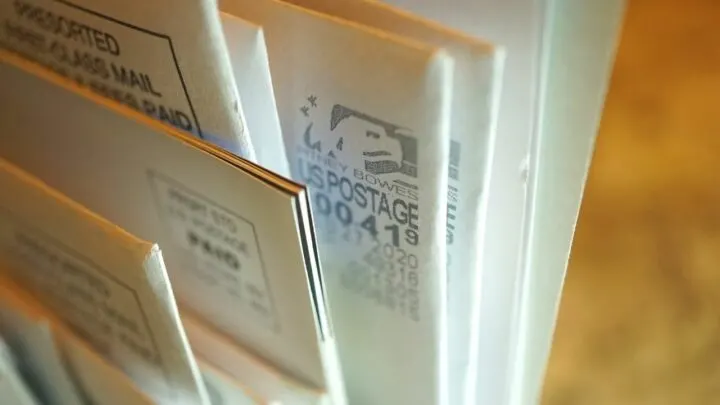Do we really care about someone when we use the abbreviation “care of,” which is abbreviated as “c/o,” in our business letters and parcel details?
Why are we even using this? And, what function does it serve in the written world?
Well, you’ve certainly come to the right site to search for some answers.
Please read on so you can take this load off your back.
What is the meaning of “c/o” mean?
The abbreviation “c/o” stands for “in care of” or simply “care of” which is mostly used together with an address and a name of a person to make delivery services more convenient. It is often seen in materials such as letter envelopes and parcel information. This abbreviation serves its purpose by allowing a person to send an item when the intended receiver is unable to directly receive the deliverable, such as a minor, celebrity, or the deceased. At the same time, it also allows the courier to send packages more efficiently because it prevents mails from being returned to the sender.
When to use “c/o”
This part of the post provides several cases wherein you might need to use “c/o” in writing, with regards to delivery-related processes in particular.
Thus, you will be able to understand the instances that prompt the use of “c/o” in various contexts by the end of this section.
As stated, “c/o” is the abbreviated form of the phrase “in care of” or “care of” which is generally used in transmitting correspondence and parcels to particular people through an authorized individual.
In a nutshell, “c/o” is used as a written device used to validate the receipt of a certain item when the intended recipient is unable to personally obtain it for some reason.
And, all these things boil down to the idea that the power of “c/o” enables the delivery procedure to be valid, traceable, and, of course, safe.
Here are some of the most common circumstances that entail using one.
Using “c/o” for invitations

We can conveniently use “c/o” when we want to send an invitation card to acquaintances, especially those we know through mutual connections.
This could happen when we have just met the person fairly recently that we do not necessarily have their personal contact details.
For example, the person happens to be an ideal client of yours who was just introduced to you by his colleague, a friend of yours, at a corporate event.
And, maybe you want to establish a relationship with this person by inviting him or her to an event which could lead to a potential business deal.
(Sorry if this is starting to get a little creepy, but, yeah, this could actually happen in real life, especially when someone is prospecting.)
Despite the availability of social networking platforms, it might not be very wise to just randomly send a connection request as it could be easily misinterpreted.
So, what do you think your next best option would be?
Yes, you couldn’t be more right! It is to invite that prospect through your friend who works in the same company.
What you can do is send an invitation card to your ideal client “in the care of” or through your friend.
Of course, don’t forget to give one to your friend too! Your social acuity should be able to prompt you to be courteous and polite in this kind of situation.
Perhaps, you might even want to use the power of “giftology,” as suggested by John Ruhlin, to increase your chances.
Using “c/o” for sending mails to minors and incompetent individuals
The USPS has enumerated some individuals who need guardianship, such as minors and those who are listed as legally incompetent individuals.
Parcels and mails to minors and the legally incompetent usually go to an entrusted individual such as a parent, a legal representative, or a conservator.
This means that when an organization or a person needs to send anything to these particular groups, the parcel’s information should contain both the addressee and the authorized person’s names.
Forgetting your “c/o” in this kind of situation entails either a return-to-sender action or the probable loss of the parcel.
All of these things mean that you should find all relevant information about the recipient before sending anything to them by means of any delivery system.
Using “c/o” for invoicing clients

When you are an independent contractor who has a specific client in a company, “c/o” can also help ensure that you will be paid for your goods or services.
This may happen when one is invoicing a client who belongs to a specific department of a company.
Instead of addressing the company in general, you can send the invoice in the care of Mr. John Doe in the accounting department.
Through this, you will be able to process your payment request more smoothly, and at the same time, the company won’t have a hard time tracking your records.
Using “c/o” for sending products to celebrities or endorsers

You can use “c/o” in sending gifts or product endorsements to your favorite celebrity or any other media influencer.
Unless you know your target individual personally, your only chance is to forward the item to their agents, such as managers, stylists, or personal assistants.
Again, just make sure you have all the necessary information about these agents before sending anything.
And, you could also send a little present to the agent if you really want to get a good chance that the item reaches your target addressee.
Also, you can attach a sticky note indicating the “c/o” information to at least let the target know whom he or she could thank for upon receiving the item.
Using “c/o” for sending something to yourself

Lastly, you might also want to send some parcels or documents to yourself but to another address that you do not usually use.
Having the necessity to do so either means that you don’t want to receive this piece of information or item at your home address, or you have just recently moved to a new location.
In this case, you may want to address the package to your office while indicating your name at the “c/o” part.
Or, this could also be done by means of addressing the item to another trusted individual and then just picking it up from him or her afterward.
Never forget to inform your friend that he or she will be receiving a package so he or she can prepare for it.
How to use “c/o” in a postal address
Now that we know the relevant contexts that may prompt the use of “c/o,” let’s take a closer look at its variations.
Company address with the authorized person’s name
Here’s a format that you can use when you only know the company address of the person you are about to send something to.
Kenneth C. Peters
c/o AquaVet Supplies
4059 Victoria Street
Baton Rouge LA 70814
Hotel address with the authorized person’s name
Here’s an example of a hotel address with the intended receiver’s name if you do not know which exact room the person is staying in.
Olivia Donald
c/o Allure Hotel
4638 Sunset Drive
Pine Bluff AR 71601
Residence address with the authorized person’s name
Here’s also how to write an address with an authorized person’s name that your addressee is temporarily staying in.
Make sure to include two names, your specific addressee at the top and the authorized individual’s name, before the address.
You may also write it this way when you’re addressing a minor, a legally incompetent individual, or anyone who has a legal conservator.
Shelby T. Jackson
c/o Walter Stump
3161 Boone Crockett Lane
Owensboro KY 41563
Using “c/o” in a business letter

In sending business letters, the idea is pretty much the same as explained earlier.
This still entails the need to indicate the addressee’s name and the company address where that person works.
You may also want to include another person’s name who works closely with the recipient just in case he or she is not available at the time of delivery.
This will ensure that the document will reach the intended individual without inviting curious attention from unwanted people.
And, do not forget to include a return address at the top left part of your letter envelope for security reasons.
Here’s an example of how to format your recipient’s information.
Charles O. Morgan
Accounting Manager
c/o David Atkinson
TLC Real Estate
4065 Green Avenue
Nashville TN 37027
The main idea of using “c/o” in business letters, or even in general, is simply to include as many necessary details as possible to make sure the document reaches the right person safely.

Frequently Asked Questions on “(in) Care of” or “c/o”
What is the abbreviation of “in care of?”
The abbreviation for “in care of” is “c/o” which is mostly used when sending parcels or documents to an addressee through another authorized person or organization.
Should we capitalize “c/o” in an address?
Generally, writing addresses are encouraged in uppercase letters, especially when writing by hand to ensure readability. But, since writing “c/o” either in upper or lowercase does not necessarily cause misinterpretation, then this is also considered optional. However, if you’re adhering to postal standards that strictly implement capitalization rules, then capitalize it.
When should we use “c/o?”
The abbreviation “c/o” is used when sending documents or parcels to a person who is unable to receive the item directly such as minors, celebrities, institutionalized, and legally incompetent individuals. In general cases, this can be used when we do not have access to the personal details of the addressee or when he or she insists so.
Conclusion
By this point, hopefully you have already understood how to use “c/o” properly, as well as the various contexts in which it is applicable.
And, as you may have deduced, using this very tiny detail appropriately does have the power of keeping the delivery process smooth and convenient for all the stakeholders involved.

Hey fellow Linguaholics! It’s me, Marcel. I am the proud owner of linguaholic.com. Languages have always been my passion and I have studied Linguistics, Computational Linguistics and Sinology at the University of Zurich. It is my utmost pleasure to share with all of you guys what I know about languages and linguistics in general.


